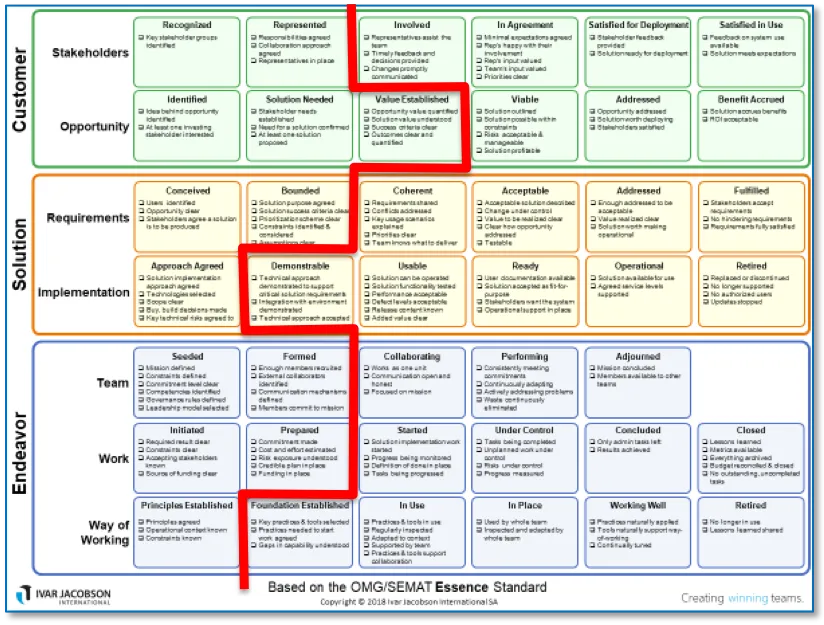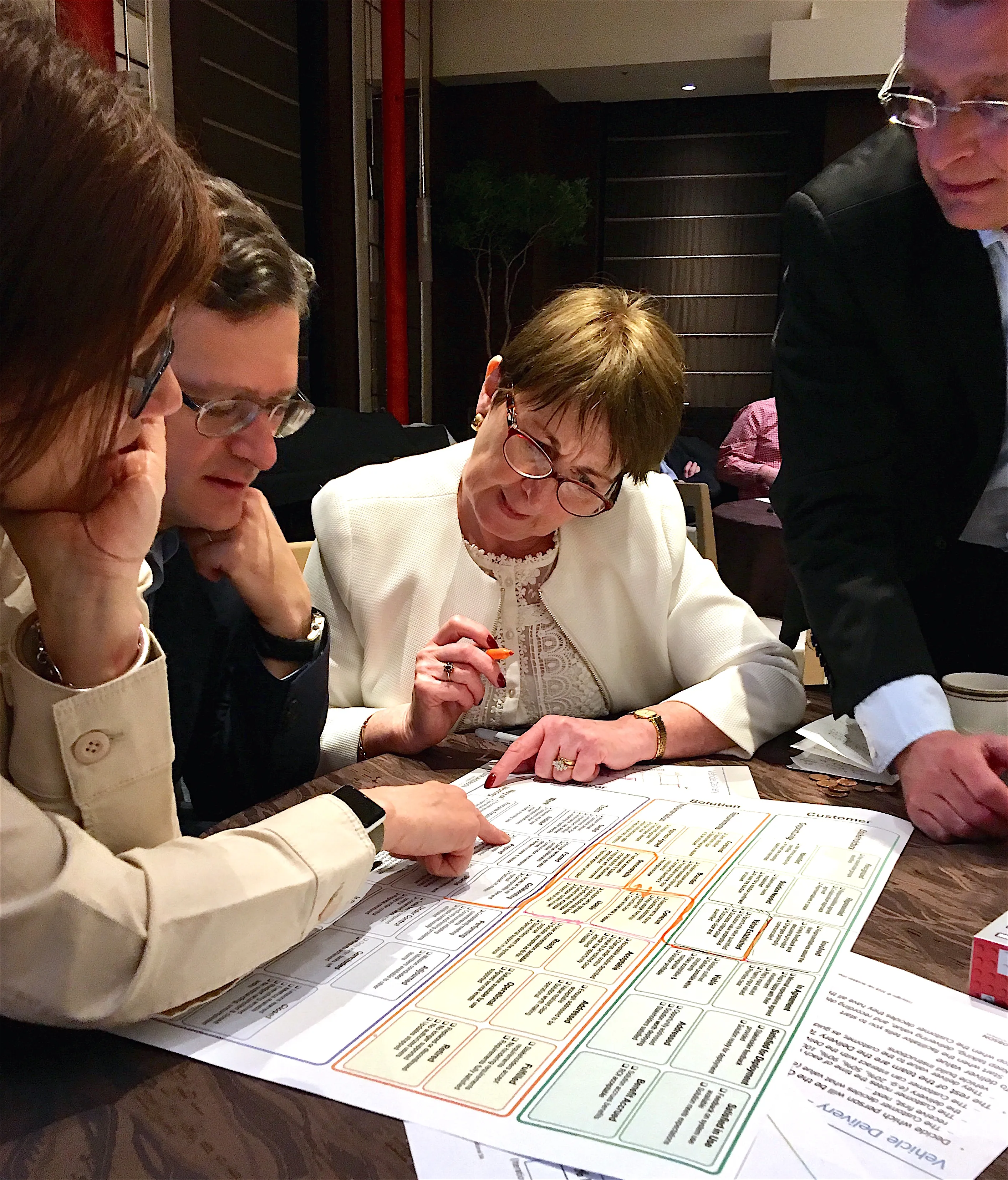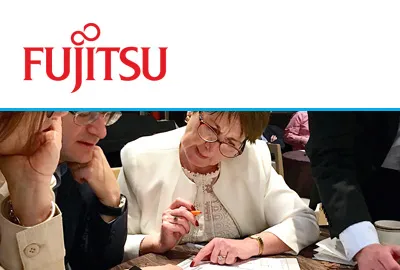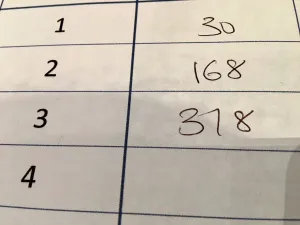In a recent blog by Fujitsu’s Rob Devlen, Fujitsu and IJI go Agile with Essence, Devlen describes how Ivar Jacobson International (IJI) worked with Fujitsu to create a workshop to build an understanding of Agile for their top 100 executives and senior managers in the EMEIA region. The blog article describes how we created that interactive workshop with them, facilitated the session and the results obtained. In this article we’ll show you a flavour of some of the content.
The Challenge to IJI
Many of the top 100 leaders were not working within software development so we had to ensure that the agile principles were presented in such a way as they could apply to all areas and domains. It was part of an overall culture change program focused on five key behaviors: Customer Obsession, Agility, Trust, Empowerment and Innovation.
We had four hours to run an interactive, fun and memorable event at the beginning of their 4-day long conference. This workshop was to open the conference so it had an extra special prominence, setting the tone for the whole week. It had to engage everyone and get them experiencing an agile way of working so they could take that mindset, enthusiasm and team-working into all the following sessions.
The workshop was specifically designed to energize the room with many team games and exercises that set a series of challenges, and provided them with agile practices, techniques and tools they could immediately apply. We also used the industry standard Essence in some of the games to give them an easy to use framework to understand how they work and how they can change to be more agile. Ultimately we had to inspire them to enable change.
The Challenges for their Top 100 Leaders
| The first challenges focused on the basic agile principles of delivering value early and often and flowing value to the customer effectively. The games in this case enabled the teams to experience the dramatic difference in the quality and value that results when working closely with a customer to prioritize and understand the work. They were also set a challenge relating to Trust and Empowerment, what this means in practice, and how they could change their own behaviors to create this environment in their own areas. While learning the basic agile behaviors in a generic way, we also gave them some simple techniques they could put into practice, e.g. with real examples of user stories from one of their customers, taking small units of value and how to manage their flow through to delivery. | “We knew ours was an atypical and challenging audience for a workshop like this, but the outcome was a triumph, and was extremely effective in achieving our ambitious goals.” Fujitsu and IJI go Agile with Essence Blog Article by Rob Devlen, Fujitsu |
|---|
The Challenge of Getting Started
Many parts of organizations that have not traditionally worked in an agile way often do too much work up front, thinking about and defining a solution, thus delaying starting the real work where they get the feedback from stakeholders and start to deliver value.
To help with this we introduced them to a thinking framework based on Essence, a standard that IJI and Fujitsu were both involved with establishing and pioneering.
| The Essence thinking framework provides a “big-picture” framework of seven key dimensions (“Alphas”), that we always need to worry about and progress effectively to ensure we are successful. In each space there are a defined set of progressions. |  |
|
 |
The challenge was for each team to draw a red line on the diagram showing what state they thought they should be in before committing to starting the ‘real’ work of delivering a solution. Most teams found it made them rethink their existing ways of working and gave them key pointers to discuss what calculated risks they might take to start work as soon as possible and get the real-world feedback and incremental value they saw in the first challenges they undertook. |
Using a standard like Essence gives them a common vocabulary and a way to discuss and control progress, even when the teams may be working in different ways in completely different domains and types of solutions (from software development to mergers and acquisitions and everything in between).
The Challenge of Making the Change
The previous challenges were mainly about learning an agile mindset and some techniques to put it into action. The final challenge was how to get the leadership team to encourage and make these changes with all the people in their areas.
Experiencing first-hand how an empowered team can creatively and radically transform their performance within a trusting environment was a great way to end the workshop on a high, but the job wasn’t quite done.
We wanted to harness that positive energy and didn’t want anyone to leave the room without knowing and committing to what actions they were going to take to further their part of the organisation on their agile journey. So this was a good opportunity to introduce them to some agile retrospective techniques where they considered the challenges throughout the workshop and what actions they were going to take as teams and as individuals to make the agile principles part of their daily work.
Overall it was a fun, educational, and collaborative event with an enthusiastic and positive set of senior people from Fujitsu, despite the jetlag of the many participants who had just flown in to the venue in Tokyo that morning!




